Traditional Pottery Techniques from Around the World
Pottery is more than just a craft; it's a reflection of culture, history, and the artistic spirit of communities across the globe. From the delicate porcelain of Asia to the rustic earthenware of Africa, traditional pottery techniques have been honed over centuries, each telling its own unique story. These techniques are not merely methods of creating vessels; they are a celebration of heritage, a connection to the past, and a means of expression that transcends generations.
As we embark on this journey around the world, we will explore the rich tapestry of pottery traditions, examining how they have evolved while retaining their core essence. Each region has its own distinctive methods, materials, and designs that are deeply intertwined with local customs and lifestyles. The artistry involved in pottery making is akin to a dance—a harmonious blend of skill, creativity, and cultural significance. Whether it’s the intricate glazing techniques of European ceramics or the functional beauty of Indigenous American pottery, these practices are a testament to human ingenuity and the desire to create.
In this article, we will delve into various traditional pottery techniques from Asia, Africa, Europe, the Americas, the Middle East, and Oceania. We will highlight the unique characteristics of each region’s pottery, the materials used, and the cultural significance behind the art form. As we explore these techniques, we will also touch upon the historical evolution of pottery and the contemporary movements that are reshaping the craft today.
So, grab a cup of your favorite beverage and join us as we uncover the fascinating world of traditional pottery techniques. Each piece of pottery is a story waiting to be told, and by understanding these stories, we can gain a deeper appreciation for the artistry and cultural richness that pottery brings to our lives.
- What are the main materials used in traditional pottery? Traditional pottery is often made from natural clay, which can vary in composition based on the region. Other materials may include minerals for glazing and decorative purposes.
- How has pottery evolved over the years? Pottery has evolved significantly with advancements in technology and changes in artistic trends. While traditional methods are still practiced, many contemporary potters incorporate modern techniques and aesthetics.
- Why is it important to preserve traditional pottery techniques? Preserving these techniques is vital for maintaining cultural heritage and identity. It allows future generations to connect with their history and the artistry of their ancestors.
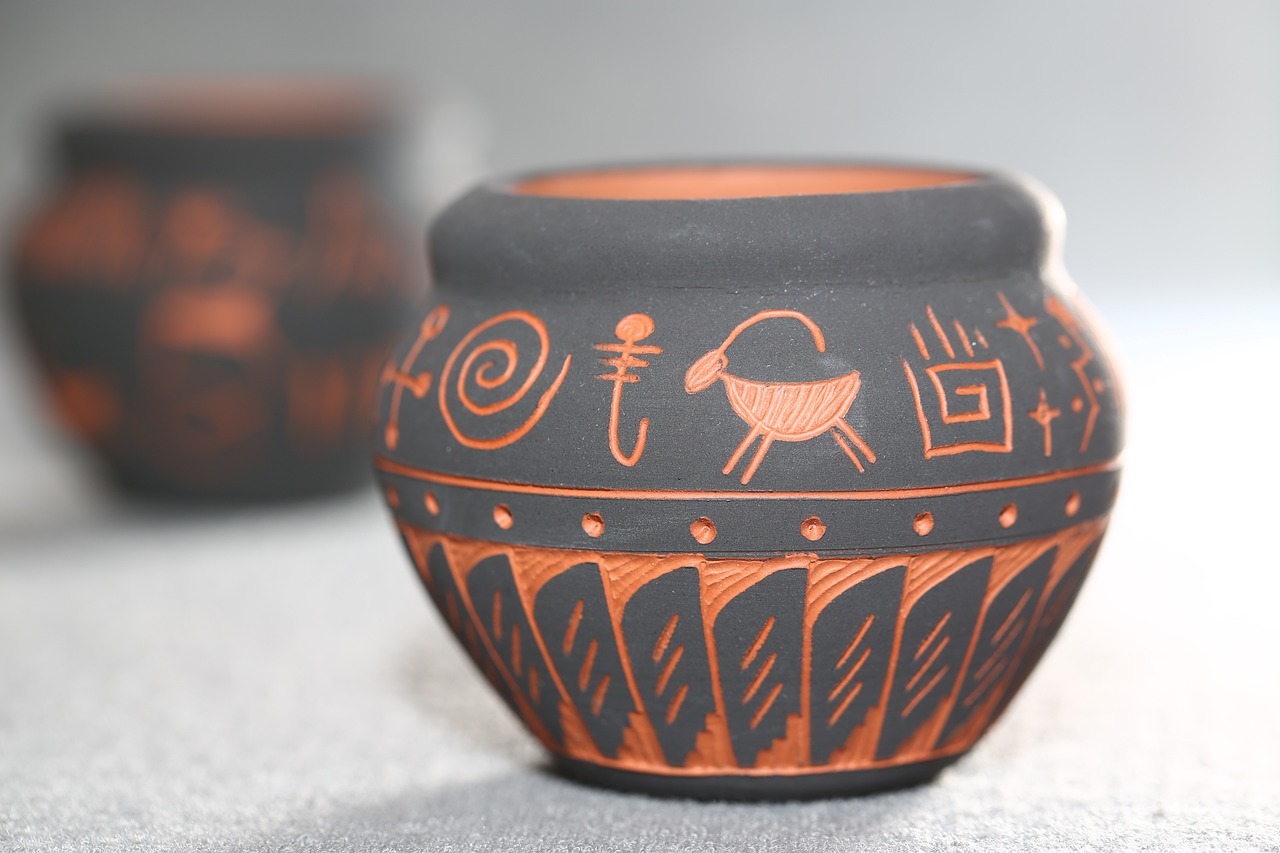
Asian Pottery Techniques
Asian pottery is a vibrant tapestry woven from the threads of culture, history, and craftsmanship. Each region boasts its unique methods and styles, reflecting the diverse traditions of its people. For instance, Chinese porcelain, renowned for its delicate beauty and strength, has captivated collectors for centuries. The ancient techniques of throwing, glazing, and firing porcelain at high temperatures have been perfected over generations, resulting in pieces that are not only functional but also works of art. Did you know that the secret to its translucence lies in the kaolin clay used, which is found primarily in China? This meticulous process showcases the harmony between nature and artistry, creating a product that tells a story of its origin.
Moving westward to India, we encounter the rustic charm of earthenware. Indian pottery varies widely across regions, with each area employing local materials and traditional methods. The Terracotta pots, often adorned with intricate carvings and vibrant glazes, are not just beautiful but also serve practical purposes in daily life. For instance, they are perfect for cooking and storing food, demonstrating a seamless blend of utility and artistry. The use of hand-building techniques, such as coiling and pinching, allows artisans to express their individuality while maintaining ancient traditions.
In Japan, the art of pottery takes on a spiritual dimension, particularly in the creation of Raku ware. This technique, which originated in the 16th century, emphasizes the beauty of imperfection. Raku pottery is removed from the kiln while still hot and placed in combustible materials like sawdust, which creates unique surface effects and colors. This unpredictable process mirrors the Japanese philosophy of wabi-sabi, celebrating the beauty found in impermanence and imperfection. Each piece is a reflection of the artisan's journey, embodying a moment in time that is both fleeting and beautiful.
Furthermore, the Korean tradition of celadon pottery is noteworthy for its stunning jade-green glaze, which is achieved through a complex firing process. This technique not only highlights the skill of the potter but also demonstrates the deep cultural significance of pottery in Korean heritage. Celadon pieces often feature intricate inlaid designs that tell stories of nature, mythology, and everyday life, making them cherished collectibles.
To sum up, Asian pottery techniques are a celebration of cultural diversity and artistic expression. From the refined elegance of Chinese porcelain to the earthy authenticity of Indian earthenware, each technique carries with it a rich history and a connection to the land. The evolution of these practices showcases how artisans have adapted to changing times while preserving their heritage. As we explore these traditional methods, it becomes evident that pottery is not merely about creating objects; it is about preserving stories, traditions, and the essence of a culture.
| Region | Technique | Characteristics |
|---|---|---|
| China | Porcelain | Delicate, strong, translucent |
| India | Earthenware | Rustic, practical, colorful |
| Japan | Raku | Imperfect, unique, spiritual |
| Korea | Celadon | Jade-green glaze, intricate designs |
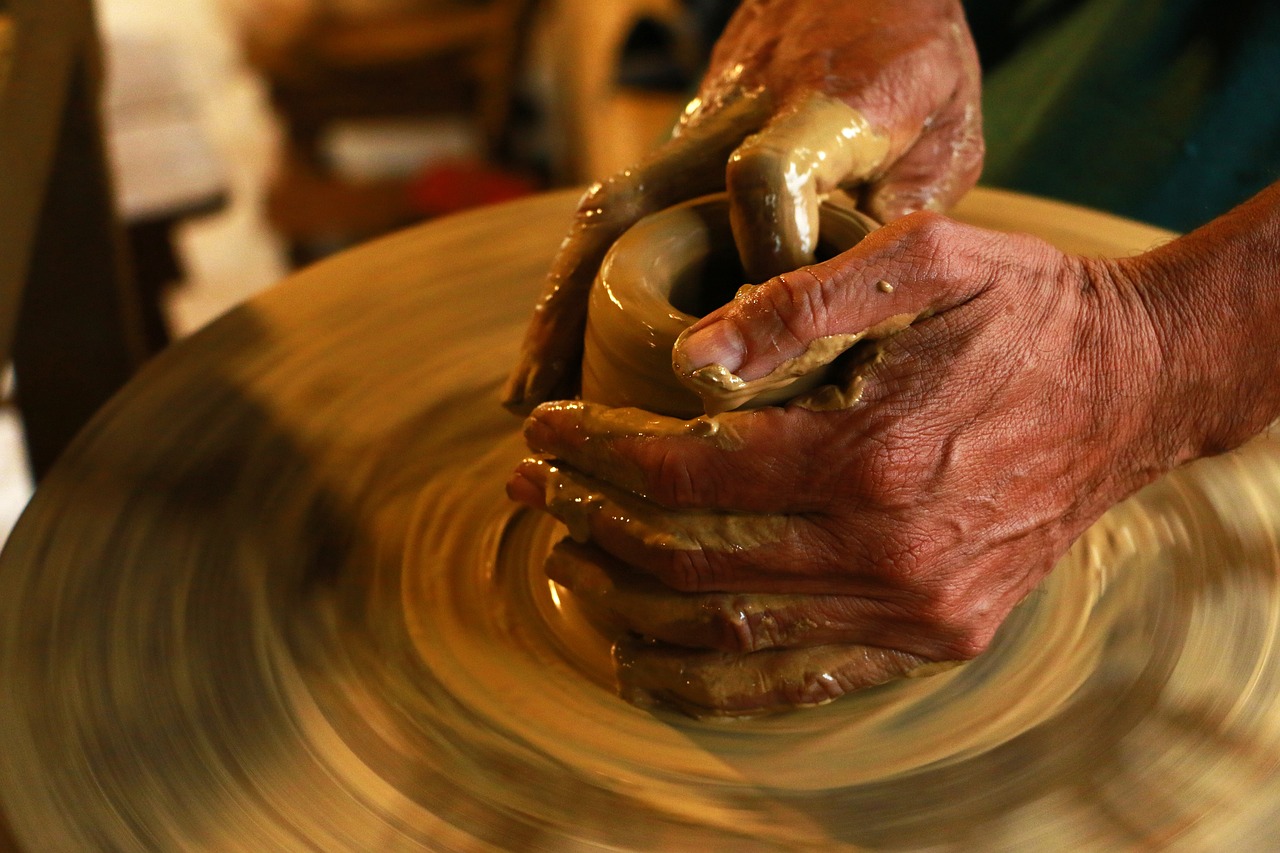
African Pottery Traditions
African pottery traditions are a vibrant tapestry woven from the rich cultural heritage of the continent. Each region boasts its own unique styles and methods, often reflecting the daily lives and spiritual beliefs of the communities that create them. From the intricate designs of the Zulu people to the utilitarian forms crafted by the Tuareg, African pottery is not just functional; it's a form of storytelling, a connection to the past, and a celebration of identity.
One of the most fascinating aspects of African pottery is the use of natural materials. Artisans often rely on locally sourced clay, which varies in color and texture depending on the region. This clay is then shaped by hand, a process that can take hours or even days. The shaping techniques can range from coiling to pinching, each method imparting a unique character to the final piece. After shaping, the pottery is usually left to dry in the sun before being fired in a traditional kiln or an open fire, which can produce a variety of finishes, including smooth, matte, or even a rustic, rough texture.
Moreover, the decoration of African pottery is a crucial aspect that reflects cultural significance. Many artisans use natural pigments derived from plants or minerals to create intricate patterns and motifs. These designs often carry deep meanings, representing everything from tribal affiliations to spiritual beliefs. For instance, the geometric patterns found in the pottery of the Himba people in Namibia are not just for aesthetics; they convey stories and histories that have been passed down through generations.
The firing techniques used in African pottery are also noteworthy. Traditional methods can include smoking and saggar firing, which can create stunning effects on the surface of the pottery. In some cultures, the firing process is a communal event, bringing together artisans and community members, reinforcing social bonds and sharing knowledge. This aspect of pottery-making is a beautiful reminder of the interconnectedness of art, culture, and community in African societies.
In addition to their aesthetic value, African pottery pieces often serve practical purposes. Many are designed for everyday use, such as cooking pots, water vessels, and storage containers. This duality of function and beauty is a hallmark of African craftsmanship. For example, the large, rounded pots of the Berber people in North Africa are not only visually striking but also perfectly suited for cooking over open flames.
As we look at the broader picture, it's essential to recognize the impact of globalization on these traditional practices. While some artisans continue to uphold centuries-old techniques, others are adapting their methods and designs to meet modern demands. This evolution can be seen in the rising popularity of African pottery in contemporary art markets, where traditional forms are being reinterpreted for new audiences.
To sum up, African pottery traditions are a rich blend of artistry, functionality, and cultural significance. They tell stories of heritage and identity, reflecting the values and beliefs of the communities that create them. As we appreciate these unique crafts, it is crucial to support the artisans and their practices, ensuring that these traditions continue to thrive in a rapidly changing world.
- What materials are commonly used in African pottery? African pottery is primarily made from locally sourced clay, often combined with natural pigments for decoration.
- What techniques are used in shaping African pottery? Common techniques include coiling, pinching, and slab building, with many artisans using hand tools to refine their forms.
- How does the firing process affect the final piece? The firing process can create unique textures and colors, influenced by methods like open firing or saggar firing.
- Are African pottery pieces purely decorative? No, many pieces are functional, used for cooking, storage, and ceremonial purposes, blending beauty with utility.
- How can I support traditional African pottery artisans? Purchasing directly from artisans, supporting fair trade initiatives, and promoting awareness of their work can help sustain these traditional practices.
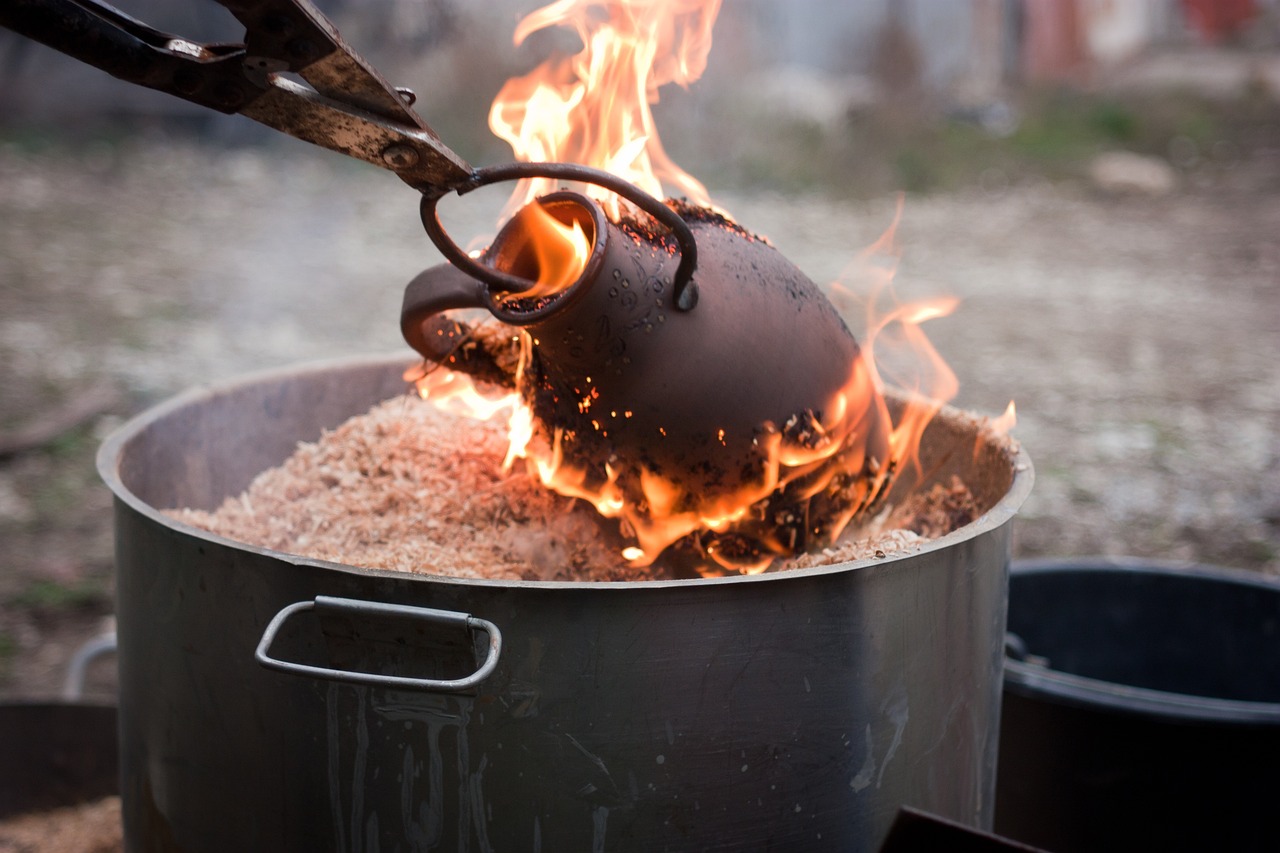
European Ceramics
When you think of , what often comes to mind are exquisite pieces that blend artistic expression with technical precision. From the delicate majolica of Italy to the iconic Delftware of the Netherlands, European pottery has a rich history that showcases the evolution of styles across various countries and eras. The intricate designs and vibrant glazes not only serve a functional purpose but also tell stories of cultural significance and artistic innovation.
One of the most fascinating aspects of European ceramics is the regional diversity in techniques and styles. For instance, the majolica technique, which originated in the Italian Renaissance, involves tin-glazing earthenware to achieve bright colors and intricate designs. This method was revolutionary at the time, allowing artisans to create visually stunning pieces that were both decorative and functional. Similarly, Delftware, characterized by its blue and white designs, emerged in the Netherlands as a response to the Chinese porcelain craze. Artisans in Delft managed to replicate the beauty of porcelain using local clay, thus creating a unique style that is still celebrated today.
Another notable style is Stoneware, which gained popularity in Germany and England. This technique involves firing clay at high temperatures, resulting in durable and often utilitarian pieces. The salt-glazing method, in particular, creates a distinctive orange-brown surface that is both functional and aesthetically pleasing. It’s fascinating to observe how these techniques have evolved over time, adapting to the needs and tastes of the societies that produced them.
In addition to these traditional methods, contemporary European ceramists are redefining the boundaries of pottery. Many artists are now experimenting with mixed media, incorporating modern aesthetics while still honoring traditional techniques. This fusion of old and new is not only refreshing but also highlights the ongoing evolution of pottery as an art form. The result is a vibrant scene where classic craftsmanship meets innovative design, encouraging a new generation of artists and enthusiasts to explore the world of ceramics.
To further illustrate the diversity of European ceramics, consider the following table that highlights some key techniques and their origins:
| Technique | Origin | Characteristics |
|---|---|---|
| Majolica | Italy | Tin-glazed earthenware, vibrant colors, intricate designs |
| Delftware | Netherlands | Blue and white designs, imitation of Chinese porcelain |
| Stoneware | Germany/England | High-fired, durable, often utilitarian |
| Salt Glazing | Germany | Distinctive orange-brown surface, functional and decorative |
In conclusion, European ceramics represent a fascinating intersection of history, culture, and artistry. The techniques and styles that have emerged over centuries not only reflect the technological advancements of their time but also the cultural exchanges that have shaped the continent. As we continue to appreciate these beautiful forms of art, it’s essential to recognize the artisans behind them, who pour their heart and soul into every piece, ensuring that the legacy of European ceramics endures for generations to come.
- What is majolica pottery? Majolica is a tin-glazed pottery technique that originated in Italy, known for its bright colors and intricate designs.
- What distinguishes Delftware from other ceramics? Delftware is characterized by its blue and white designs, which were inspired by Chinese porcelain.
- Is stoneware suitable for everyday use? Yes, stoneware is durable and often used for functional items like dishes and cookware.
- How has contemporary pottery evolved in Europe? Contemporary pottery incorporates traditional methods with modern aesthetics, allowing for innovative designs and new artistic expressions.
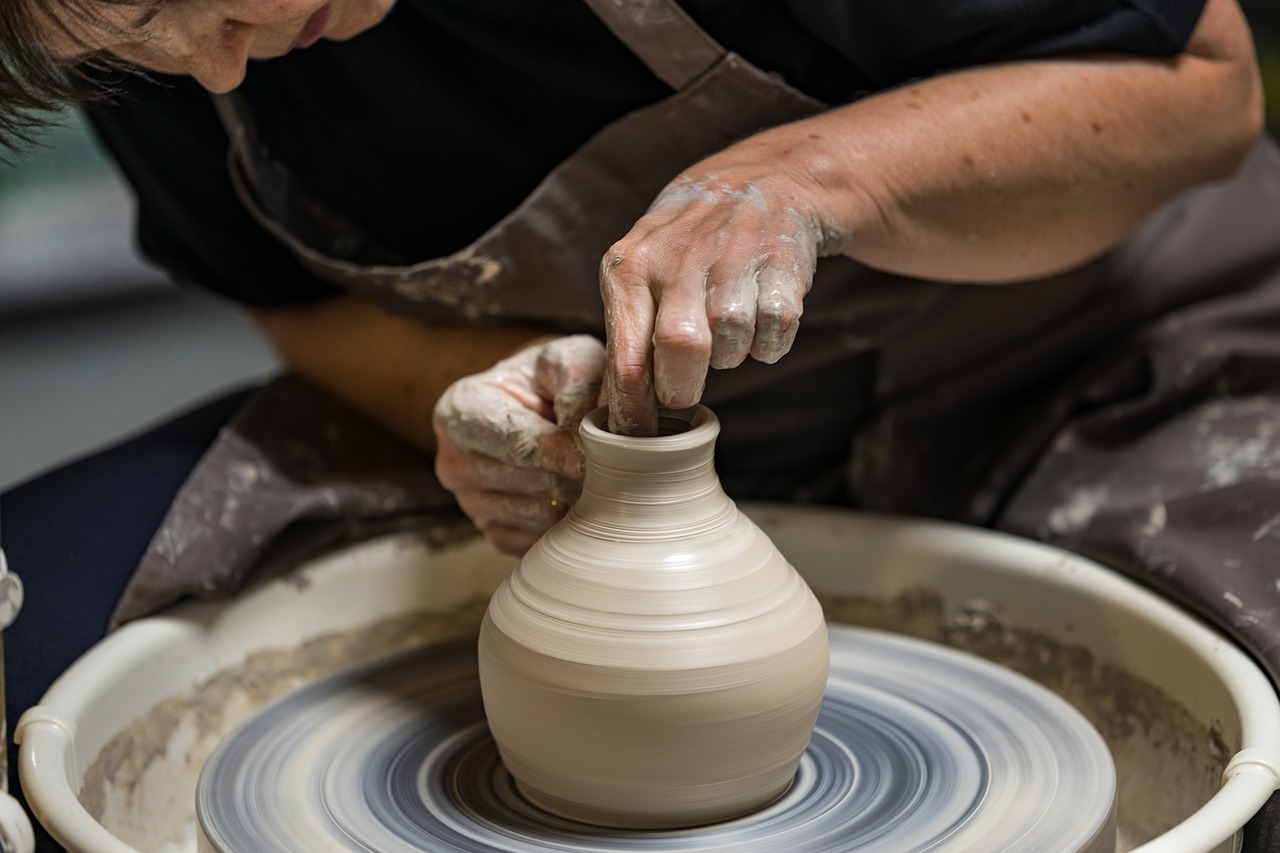
Indigenous American Pottery
Indigenous American pottery is not just a craft; it’s a vibrant expression of culture, identity, and history. Each piece tells a story, revealing the deep connection between the artisans and their environment. From the Southwest to the Great Plains, Indigenous communities have utilized local materials, such as clay and natural pigments, to create functional and decorative items that reflect their unique traditions and beliefs. The methods used in crafting these pieces are often passed down through generations, embodying a rich heritage that is as diverse as the landscapes of America itself.
One of the most renowned styles comes from the Pueblo peoples of the Southwest. Their pottery is characterized by its intricate designs and use of natural clay, which is often coiled and hand-shaped. This technique allows for a personal touch, with each artisan infusing their own creativity into the work. The Pueblo potters often use symbols and motifs that have cultural significance, such as animals, plants, and geometric patterns, making each piece a canvas of storytelling.
In contrast, the pottery of the Plains tribes, such as the Lakota and Cheyenne, tends to focus on functionality. They create items like cooking pots and storage containers, often decorated with simple yet striking designs. This practical approach to pottery reflects the nomadic lifestyle of these tribes, where portability and utility are essential. Interestingly, some tribes also incorporate elements of their spirituality into their pottery, using it as a medium to connect with their ancestors and the spirit world.
Another fascinating aspect of Indigenous American pottery is the use of traditional firing techniques. Many artisans still employ pit firing, a method that involves burying the pottery in a pit filled with combustible materials. This ancient technique not only adds unique color variations to the finished pieces but also connects the artisans to their ancestors, who practiced similar methods centuries ago. The results are often unpredictable, leading to one-of-a-kind pieces that carry the essence of the earth itself.
Despite the rich history and cultural significance of Indigenous pottery, many artisans face challenges in the modern world. The rise of mass-produced goods and globalization threatens to overshadow these traditional practices. However, many Indigenous artists are finding ways to adapt, blending contemporary aesthetics with traditional techniques. This fusion not only preserves the craft but also makes it relevant to today’s audience, ensuring that the stories and traditions behind these beautiful creations continue to be told.
In conclusion, Indigenous American pottery is a testament to the resilience and creativity of Native cultures. It is a beautiful amalgamation of history, identity, and artistry, reminding us of the importance of preserving these traditions. As we appreciate these stunning works, let’s also recognize the stories and cultures they represent, ensuring that they are celebrated and carried forward for generations to come.
- What materials are commonly used in Indigenous American pottery? Indigenous American potters typically use local clays, natural pigments, and sometimes minerals for decoration.
- How do traditional firing techniques affect pottery? Traditional firing techniques, like pit firing, create unique color variations and textures, making each piece one-of-a-kind.
- What cultural significance does pottery hold for Indigenous peoples? Pottery serves as a medium for storytelling and cultural expression, often incorporating symbols and designs that reflect the community's values and beliefs.
- How can I support Indigenous pottery artisans? Purchasing authentic pieces, supporting local markets, and promoting awareness of Indigenous art and culture are great ways to help.
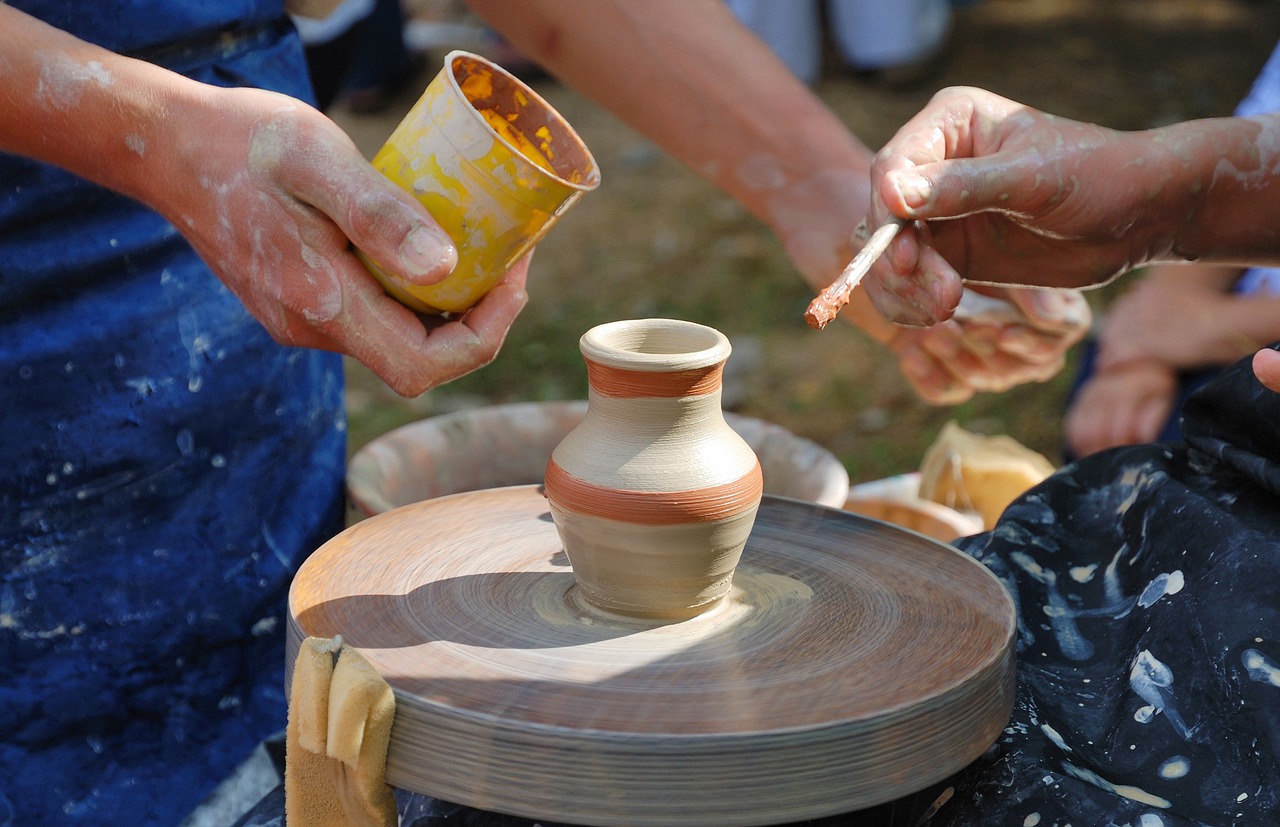
Middle Eastern Pottery Craft
The art of pottery in the Middle East is a vibrant tapestry woven from ancient traditions, cultural exchanges, and innovative techniques. This region, known for its rich history, has produced some of the most stunning pottery pieces that not only serve functional purposes but also act as a canvas for storytelling and artistic expression. From the intricate tile work of Iran to the bold, geometric patterns of Moroccan ceramics, Middle Eastern pottery reflects a deep connection to the land and its people.
One of the defining characteristics of Middle Eastern pottery is the use of vibrant glazes that create a stunning visual impact. These glazes often feature a mix of colors that can range from deep blues and greens to bright yellows and reds, making each piece a unique work of art. The glazes are typically derived from natural minerals and oxides, showcasing the artisans' knowledge of their materials and techniques. This mastery is evident in the way the glazes interact with the clay body, resulting in a glossy finish that enhances the intricate designs.
Another fascinating aspect of Middle Eastern pottery is the intricate designs and motifs that adorn each piece. Many of these designs draw inspiration from the region's rich history, including influences from Islamic art, which often features geometric patterns and floral motifs. For instance, the famous Iznik pottery from Turkey is renowned for its elaborate designs that often depict flowers, birds, and intricate patterns, all meticulously painted by hand. This attention to detail not only highlights the skill of the artisans but also tells a story of cultural significance and heritage.
The firing techniques used in Middle Eastern pottery are equally impressive. Traditional methods often involve wood-fired kilns, which impart a unique character to the finished products. This method of firing is not only about achieving the right temperature but also about the atmosphere within the kiln, which can affect the final appearance of the pottery. The use of such ancient techniques connects modern artisans to their ancestors, preserving a lineage of craftsmanship that has stood the test of time.
In addition to its aesthetic appeal, Middle Eastern pottery plays a vital role in daily life. Many pieces are designed for practical use, including serving dishes, water jugs, and storage containers. The functionality of these items does not diminish their artistic value; rather, it enhances it, as each piece is crafted with both beauty and utility in mind. For example, the traditional tagine pot from Morocco is not only a cooking vessel but also a beautiful piece of art that reflects the cultural identity of the region.
As globalization continues to influence traditional crafts, there is a growing movement among artisans and organizations to preserve these ancient techniques. Workshops and community programs are being established to teach younger generations the skills needed to create authentic Middle Eastern pottery. This commitment to preservation ensures that these beautiful traditions do not fade away but instead thrive in a modern context.
In conclusion, Middle Eastern pottery is more than just a craft; it's a reflection of a rich cultural heritage that spans centuries. The vibrant colors, intricate designs, and functional forms tell stories of the past while paving the way for future generations of artisans. As we appreciate these beautiful creations, we also recognize the importance of keeping these traditions alive in an ever-changing world.
- What materials are commonly used in Middle Eastern pottery? Middle Eastern pottery typically uses clay sourced from local regions, often combined with natural minerals for glazing.
- How are traditional firing techniques different from modern methods? Traditional firing techniques often involve wood-fired kilns, which create a unique atmosphere that affects the pottery's final appearance, unlike modern electric kilns.
- What is the significance of designs in Middle Eastern pottery? Designs often reflect cultural stories, religious beliefs, and historical influences, serving as a visual representation of the region's heritage.
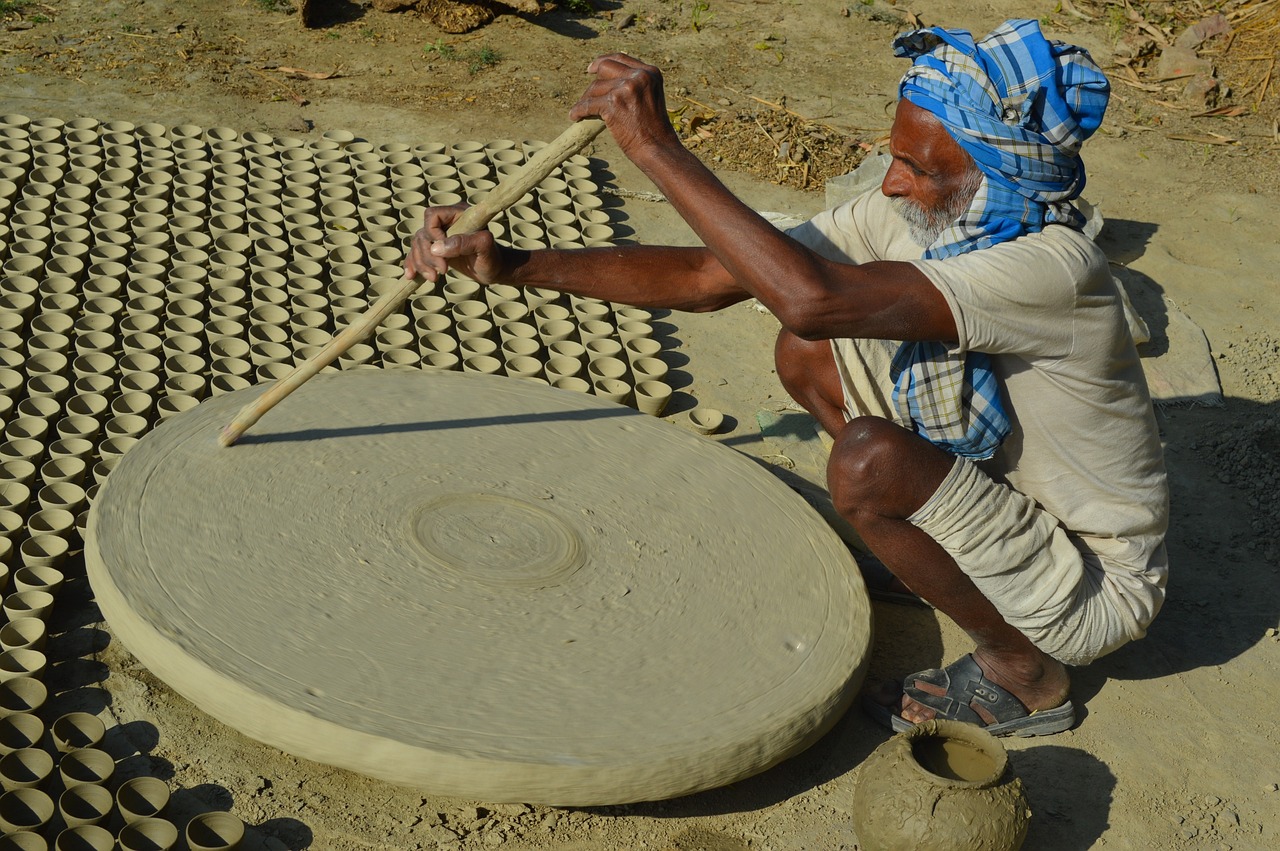
Oceanic Pottery Practices
When we think of pottery, the vibrant cultures of the Oceanic region often come to mind, particularly the stunning artistry found in Polynesia. Oceanic pottery practices are not just about creating functional items; they are a profound expression of the relationship between the artisans and their island environments. The materials used, the techniques employed, and the designs created are all deeply rooted in the cultural narratives of the people.
One of the most fascinating aspects of Oceanic pottery is the use of natural resources. Artisans often rely on locally sourced clay, which varies in texture and color depending on the island. For instance, the rich red clays of some islands are often favored for their vibrant hues. The process of gathering and preparing clay is an art in itself, requiring knowledge passed down through generations. This connection to the land not only informs the materials used but also the spiritual significance behind each piece.
Traditional firing methods in Oceanic pottery are equally intriguing. Many artisans employ open-fire techniques, which can produce unique effects that are hard to replicate with modern kilns. The unpredictability of open firing can lead to stunning results, with colors and textures that reflect the natural elements of wind, fire, and earth. This method not only enhances the aesthetic appeal but also embodies the spirit of the environment in which these pots are created.
Moreover, the designs found in Oceanic pottery are often rich with symbolism. Many pieces feature intricate patterns that tell stories of ancestry, mythology, and the sea. For example, certain motifs may represent ocean waves or marine life, connecting the pottery to the very waters that surround the islands. This storytelling aspect adds another layer of meaning to each creation, making them not just objects but vessels of cultural heritage.
As we explore the diversity within Oceanic pottery, it's essential to recognize the differences between islands. For instance, the pottery styles of Hawaii may differ significantly from those of Fiji or Samoa. Each region has developed its own unique techniques and aesthetics, influenced by local traditions and available materials. This diversity is a testament to the creativity and adaptability of the artisans, who continuously innovate while respecting their ancestral roots.
In recent years, there has been a growing interest in preserving these traditional practices. With the influence of globalization, many artisans find themselves at a crossroads between maintaining their cultural heritage and adapting to contemporary market demands. Organizations and communities are coming together to support artisans in this endeavor, ensuring that the rich traditions of Oceanic pottery are not lost to time.
In conclusion, Oceanic pottery practices are a remarkable blend of art, culture, and nature. They reflect the deep connection between the people and their environment, showcasing the beauty of locally sourced materials and traditional techniques. As we appreciate these unique creations, it's crucial to support the artisans who keep these traditions alive, allowing future generations to experience the magic of Oceanic pottery.
- What materials are commonly used in Oceanic pottery? Artisans typically use locally sourced clay, which varies in texture and color across different islands.
- How is Oceanic pottery fired? Many artisans use traditional open-fire techniques, which create unique effects and colors on the pottery.
- What themes are prevalent in Oceanic pottery designs? Designs often incorporate symbols related to ancestry, mythology, and the sea, reflecting the cultural narratives of the region.
- Why is it important to preserve traditional pottery techniques? Preservation is vital for maintaining cultural heritage and ensuring that future generations can appreciate and learn from these traditions.

Historical Evolution of Pottery
The journey of pottery is as intricate as the designs that adorn its surface. From the **earliest human civilizations** to today’s modern interpretations, the evolution of pottery techniques has been a fascinating tale of **innovation, cultural exchange, and artistic expression**. It all began around 29,000 BC, with the creation of the **Venus of Dolní Věstonice**, a figurine made from clay, which signifies the first known use of fired clay. As societies developed, so did their pottery styles, reflecting their unique identities and values.
Throughout history, various regions embraced pottery, each contributing to its evolution in distinct ways. For instance, in **Asia**, the invention of porcelain during the Tang Dynasty (618–907 AD) marked a significant turning point. This fine, white clay was not only durable but also allowed for intricate designs, leading to the establishment of China as a **global leader in pottery**. Meanwhile, in **Europe**, the Renaissance brought about a renewed interest in ceramics, with techniques like **majolica** and **Delftware** emerging, showcasing vibrant colors and detailed artistry.
Interestingly, the **Middle Ages** saw a decline in pottery quality in Europe, largely due to the fall of the Roman Empire and the subsequent loss of trade routes. However, this period was not without its advancements. The introduction of the **potter's wheel** allowed for more uniform shapes and sizes, revolutionizing the craft. As we moved into the **Renaissance**, the revival of classical techniques and the introduction of new glazes transformed pottery into a respected art form.
The **Industrial Revolution** in the 18th and 19th centuries brought about a significant shift in pottery production. Factories began to mass-produce ceramics, making them more accessible to the general public. This era also saw the rise of **transfer printing**, which allowed for intricate designs to be reproduced quickly and efficiently. Yet, amidst this industrial boom, many artisans sought to preserve traditional methods, leading to a fascinating juxtaposition of old and new.
In contemporary times, we witness a resurgence of interest in traditional pottery techniques. Artisans around the globe are embracing their cultural heritage while experimenting with modern aesthetics. This blend of past and present not only keeps the art form alive but also allows for a rich dialogue between generations. Today, pottery is not just about functionality; it serves as a canvas for personal expression, cultural storytelling, and even social commentary.
To summarize, the historical evolution of pottery is a testament to human creativity and adaptability. As techniques have transformed over the centuries, pottery continues to reflect the **cultural narratives** and **technological innovations** of its time. It is a fascinating journey that connects us to our ancestors while paving the way for future generations of potters.
- What are the oldest known pottery techniques? The oldest known pottery techniques date back to around 29,000 BC, with the creation of clay figurines like the Venus of Dolní Věstonice.
- How did the invention of the potter's wheel change pottery? The introduction of the potter's wheel allowed for more uniform shapes and sizes, enhancing the efficiency and quality of pottery production.
- What is the significance of porcelain in the history of pottery? Porcelain, invented during the Tang Dynasty, represented a significant advancement in pottery, known for its durability and ability to showcase intricate designs.
- How have contemporary potters incorporated traditional techniques? Contemporary potters often blend traditional methods with modern aesthetics, creating unique pieces that honor cultural heritage while embracing innovation.
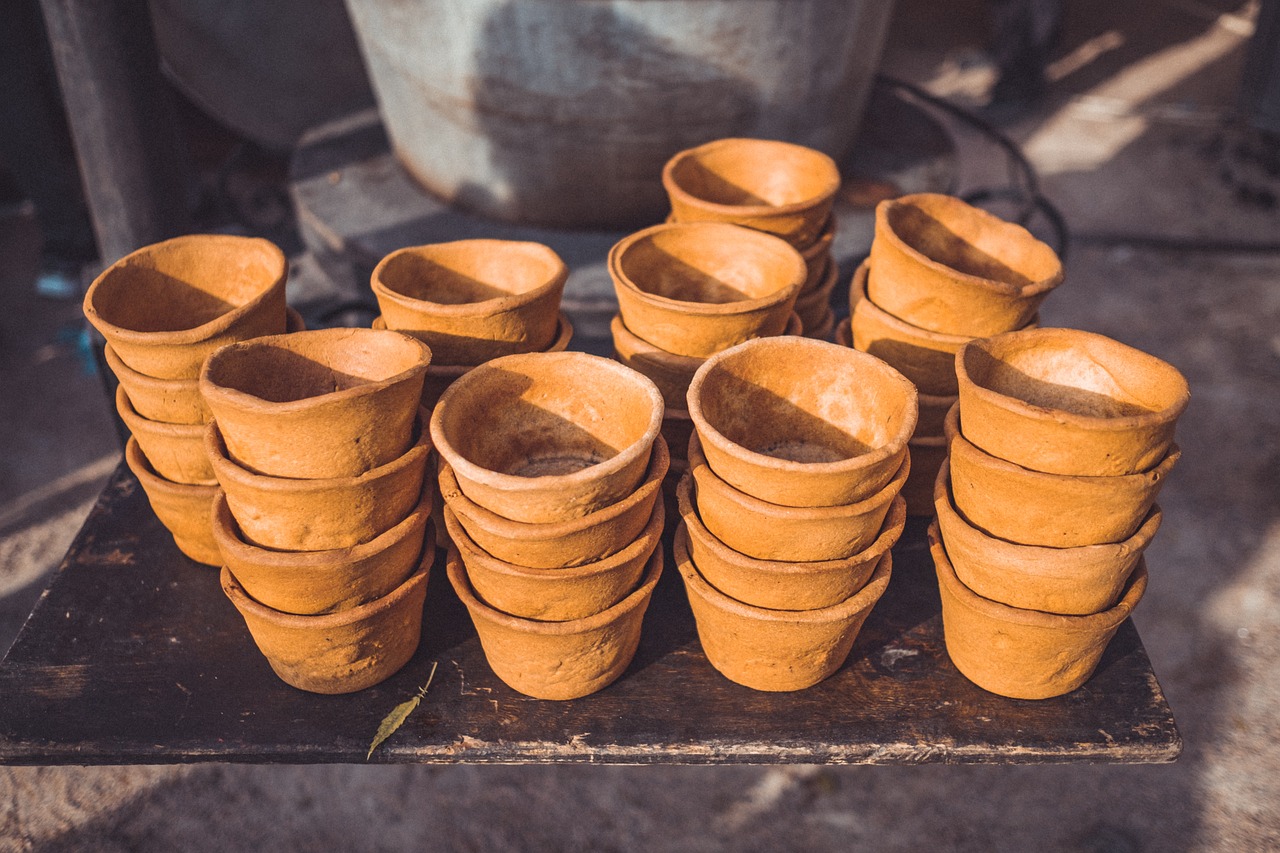
Contemporary Pottery Movements
In today’s fast-paced world, where technology often overshadows traditional crafts, have emerged as a vibrant blend of old and new. These movements breathe fresh life into age-old techniques, allowing artisans to express their creativity while honoring the heritage of their craft. Imagine walking into a gallery where the walls are adorned with stunning pieces that tell stories of both tradition and innovation. Isn’t it fascinating how pottery can evolve yet remain deeply rooted in history?
One of the most compelling aspects of contemporary pottery is its ability to challenge conventions. Artists are no longer confined to traditional forms and glazes; they are experimenting with textures, colors, and shapes that push the boundaries of what pottery can be. For instance, some potters are incorporating mixed media, combining ceramics with glass, metal, or even textiles, resulting in pieces that are not just functional but also strikingly artistic. This fusion of materials reflects a broader cultural shift towards embracing diversity in artistic expression.
Moreover, sustainability has become a significant focus in contemporary pottery. Many artisans are turning to eco-friendly materials and practices, emphasizing the importance of preserving our planet while creating beautiful works of art. From using locally sourced clay to experimenting with natural glazes made from plants and minerals, these potters are committed to reducing their environmental impact. It’s like they’re saying, “Let’s create beauty without harming the earth.” This movement towards sustainability not only resonates with environmentally conscious consumers but also inspires a new generation of artists to consider their ecological footprint.
In addition to these innovative practices, community plays a vital role in contemporary pottery movements. Workshops and collaborative spaces have sprung up worldwide, where potters gather to share techniques, ideas, and inspiration. These communal environments foster a sense of belonging and encourage the exchange of knowledge between seasoned artisans and newcomers alike. It’s a beautiful reminder that pottery is not just an individual pursuit but a collective journey of creativity. Just think about how much richer our lives are when we share our experiences and learn from one another!
Furthermore, the influence of social media cannot be overlooked in this context. Platforms like Instagram and Pinterest have transformed the way pottery is showcased and appreciated. Artists can now reach global audiences, sharing their work with a click of a button. This visibility has led to a renaissance of interest in pottery, as people discover the beauty and intricacy of handmade ceramics. It’s as if the world has opened up, allowing both artists and admirers to connect in ways that were previously unimaginable.
As we look to the future, it’s clear that contemporary pottery movements are not just a fleeting trend. They represent a dynamic and evolving art form that honors tradition while embracing innovation. Whether it’s through sustainable practices, community engagement, or the power of social media, today’s potters are crafting their legacy in clay. So, the next time you admire a piece of pottery, take a moment to appreciate the stories behind it—the traditions, the innovations, and the passion that have shaped it into a work of art.
- What materials are commonly used in contemporary pottery? Contemporary potters often use a variety of materials, including traditional clay, eco-friendly alternatives, and mixed media components like glass and metal.
- How can I learn pottery today? Many community centers and art studios offer pottery classes. Additionally, online tutorials and workshops have made learning accessible to everyone.
- What role does social media play in contemporary pottery? Social media platforms allow potters to showcase their work, connect with a global audience, and share techniques, fostering a vibrant community of artists.
- Are there any sustainable practices in pottery? Yes, many contemporary potters prioritize sustainability by using local materials, natural glazes, and eco-friendly firing techniques.
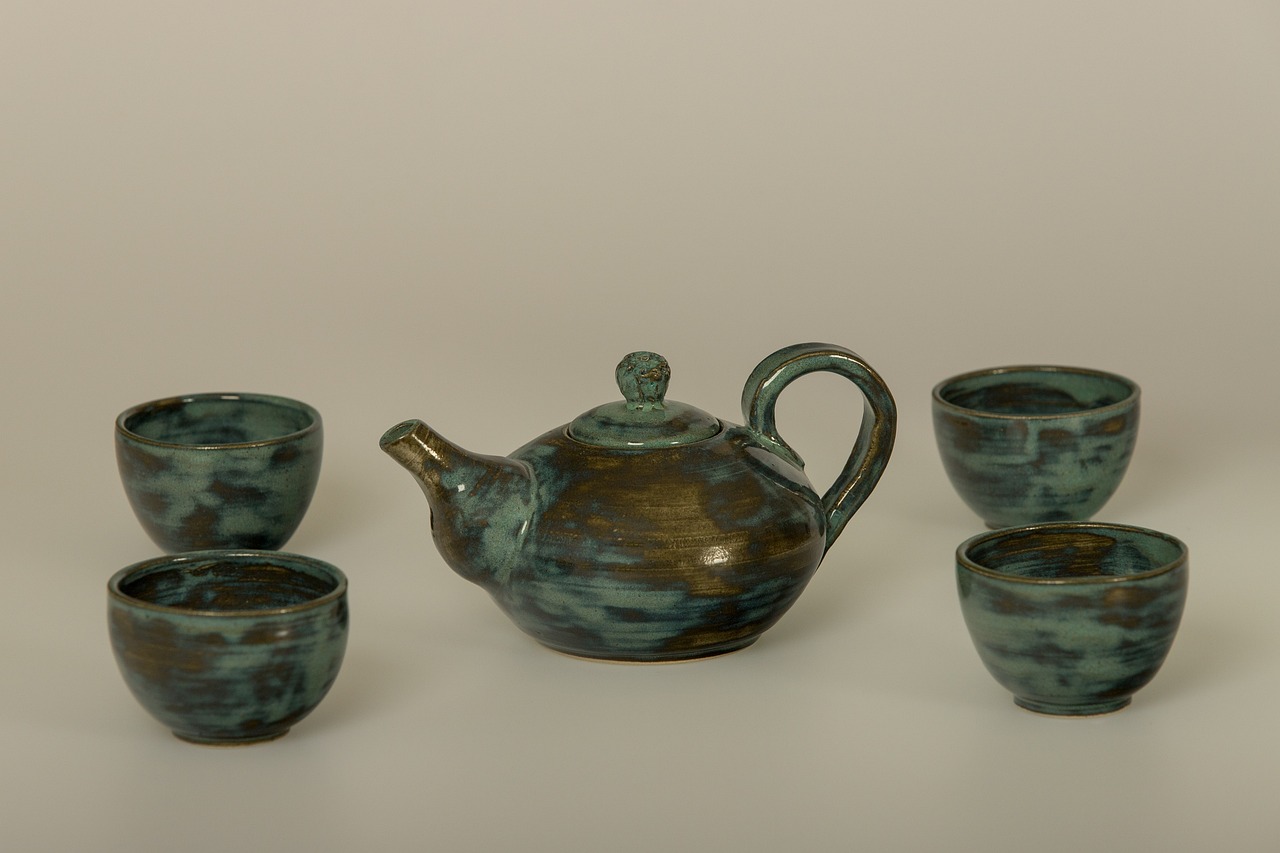
Preservation of Traditional Techniques
The preservation of traditional pottery techniques is crucial for maintaining cultural heritage and identity across the globe. As the world becomes increasingly interconnected and modernized, many artisans face the challenge of keeping their ancestral methods alive. The rich stories and skills embedded in these techniques are not merely crafts; they are the lifeblood of communities, representing a way of life that has been passed down through generations. Without conscious efforts to sustain these practices, we risk losing a significant part of our global cultural tapestry.
Organizations and communities play a pivotal role in this preservation process. They often engage in various initiatives aimed at revitalizing traditional pottery practices. For instance, workshops, cultural festivals, and educational programs are designed to teach younger generations about the significance of these techniques. Such efforts not only provide practical skills but also foster a sense of pride and connection to one’s heritage. It’s like passing down a family recipe; when you learn to create something meaningful, it strengthens your bond with your roots.
Moreover, collaboration between artisans and contemporary artists has opened new avenues for innovation while respecting traditional methods. This fusion of old and new can lead to exciting creations that honor cultural legacies while appealing to modern aesthetics. For example, a traditional pottery technique might be adapted to create contemporary art pieces that still reflect the original style. This synergy can attract a broader audience, encouraging appreciation and support for traditional crafts.
However, the journey of preservation is not without obstacles. Globalization often leads to the commodification of traditional crafts, where mass-produced items overshadow authentic handmade pieces. This can dilute the cultural significance and economic viability of traditional pottery. To combat this, it is essential for artisans to market their unique stories and the intricate processes behind their work. By emphasizing the authenticity and cultural heritage of their pottery, artisans can carve out a niche in the market that values quality and tradition over quantity.
Additionally, government support and funding can significantly impact the preservation of these techniques. Policies that encourage the protection of traditional crafts, provide financial assistance to artisans, and promote cultural tourism can create a sustainable environment for these practices to thrive. For instance, countries with rich pottery traditions often establish grants and programs to support artisans in their craft, ensuring that these techniques are not just memories of the past but vibrant parts of the present.
In conclusion, preserving traditional pottery techniques is a multifaceted endeavor that requires the collective effort of communities, artisans, and governments. By fostering education, encouraging innovation, and advocating for policy support, we can ensure that these invaluable traditions continue to be celebrated and passed down through generations. After all, every piece of pottery tells a story, and it is our responsibility to keep those stories alive.
- Why is it important to preserve traditional pottery techniques?
Preserving these techniques helps maintain cultural heritage, identity, and the unique stories associated with different communities. - How can I support traditional pottery artisans?
Supporting local artisans by purchasing their work, attending workshops, and promoting their crafts can help sustain their practices. - What role does globalization play in the preservation of pottery techniques?
Globalization can threaten traditional practices by promoting mass production, but it can also create opportunities for artisans to reach wider audiences.
Frequently Asked Questions
-
What are traditional pottery techniques?
Traditional pottery techniques are age-old methods of crafting pottery that have been passed down through generations. These techniques vary widely across different cultures and regions, showcasing unique styles, materials, and firing methods. From the delicate porcelain of China to the earthy earthenware of India, each technique tells a story of its cultural significance and the craftsmanship involved.
-
How do Asian pottery techniques differ from African pottery traditions?
Asian pottery techniques often emphasize intricate designs and fine craftsmanship, such as the detailed patterns found in Chinese porcelain. In contrast, African pottery traditions focus on using natural materials and functional designs that reflect everyday life. The firing methods also differ, with African pottery often incorporating unique techniques that are deeply rooted in their cultural practices.
-
What role does pottery play in Indigenous American cultures?
Pottery in Indigenous American cultures serves both functional and decorative purposes. It reflects a deep connection to the land and utilizes local materials, showcasing the artisans' relationship with their environment. Each piece often carries cultural significance, telling stories or representing traditions that have been cherished for centuries.
-
How has contemporary pottery evolved from traditional techniques?
Contemporary pottery movements blend traditional methods with modern aesthetics, creating a unique fusion of old and new. Artists today may use traditional firing techniques while experimenting with contemporary designs and materials. This evolution allows pottery to remain relevant and expressive in today’s artistic landscape, appealing to a broader audience.
-
Why is it important to preserve traditional pottery techniques?
Preserving traditional pottery techniques is crucial for maintaining cultural heritage. As globalization and modernization threaten these practices, efforts by artisans and organizations become vital to ensure that these unique skills and stories are not lost. By keeping these traditions alive, we celebrate the diversity and richness of human creativity.



















